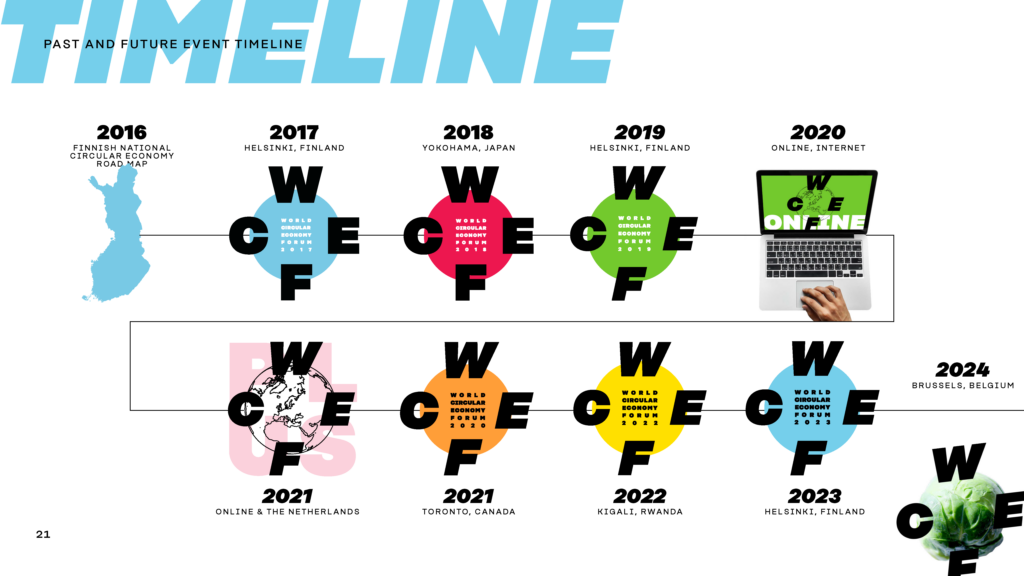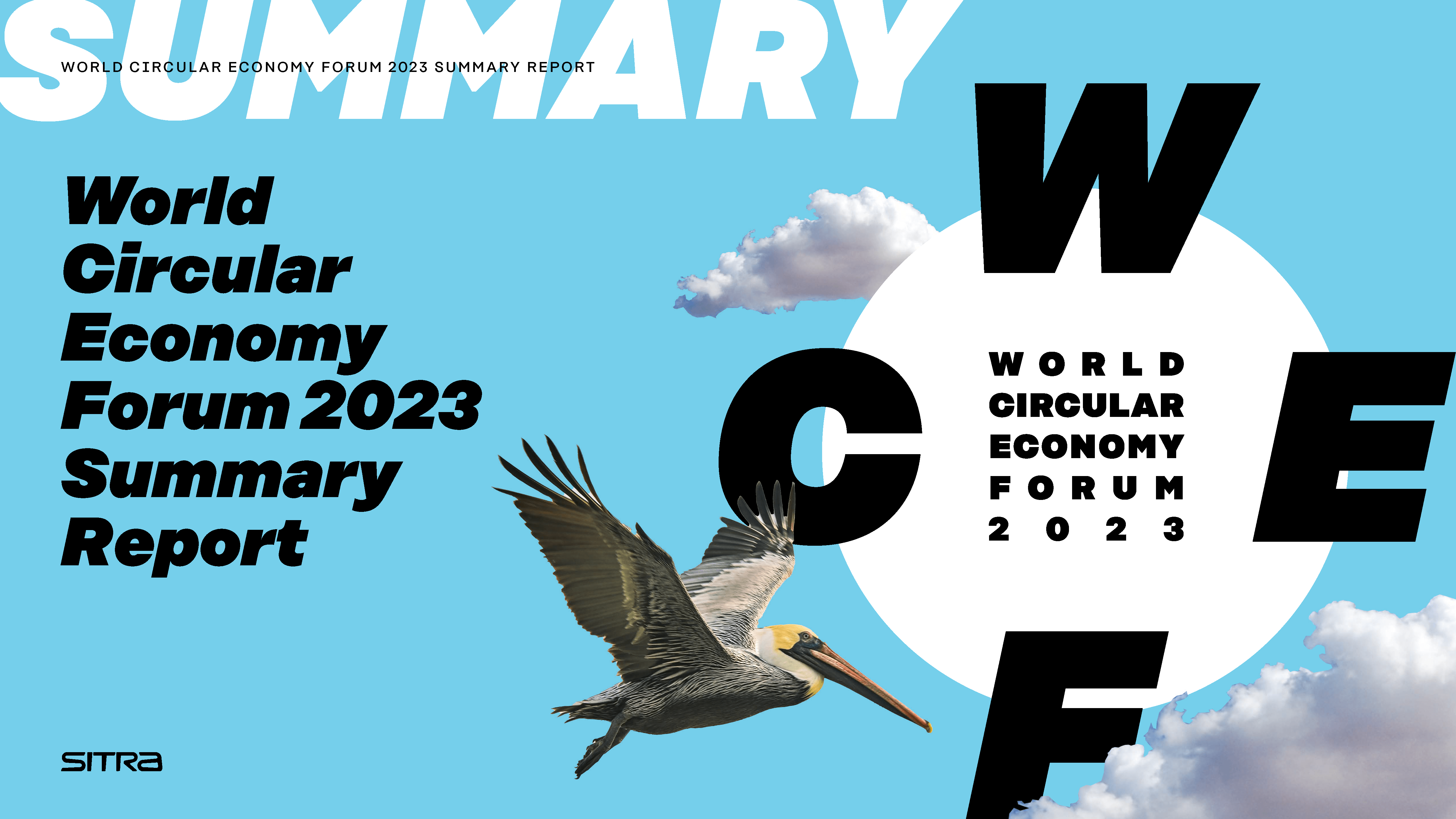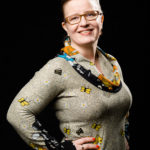Towards a nature positive tomorrow together with future leaders
In 2023, one of the world’s most influential circular economy events, the World Circular Economy Forum, returned to the Nordics. With examples from around the world, the Forum gathered a global audience in Helsinki, Finland to share solutions and show how the circular economy can help both nature and the economy.
Since these issues are multi-generational and the core principle of a circular economy must be ensuring sustainability in the long-term, one goal of WCEF2023 was engaging younger generations in the top-level circular economy discussions. On the opening day, a plenary session designed by four youth organisations had young leaders boldly speaking for a future they believe in. Youth were also well represented in the audience, with 31 per cent of all participants being under 35 years.
Overall, speakers at the Forum agreed that circular solutions implemented today can grow our economy, regenerate nature and sustain a safe and just space for future generations. Last year in Kigali, someone hit the bull’s eye by saying that the discussion around circularity is still stuck in the future. Therefore, this year the aim was to shift the focus from “why” to “how and now”.
Some of the key levers discussed during the Forum included the need to strengthen collaboration and engagement at different levels, leverage finance and policy to support circular businesses, regenerate land, translate global ideas to local solutions, prioritise human well-being and rethink the way we consume and do business.
With the Kunming-Montreal global biodiversity framework steering efforts to deliver a future where biodiversity loss is reversed, the Forum brought nature as an integral element to the table. By delivering solutions that reduce pressures on land-use and give more value from biomass, the circular economy provides a plethora of opportunities to accelerate the transition towards a nature-positive future.
The Forum shared inspiring and scalable examples of the circular economy covering a variety of topics, such as: finance, accounting and metrics, everyday life and health, future skills, and strategies and road maps. It also covered industries like regenerative agriculture and forestry, finite materials and energy, mining, trade, fashion and textiles, food, construction and the built environment, plastics and packaging, electronics and hydrogen.
On 30 and 31 May, 151 speakers from across the world shared their innovative ideas and action plans across 20 sessions. Between the main event sessions, more than 50 organisations shared their solutions at the WCEF2023 Expo. And on 1 and 2 June, 41 partner-led Accelerator Sessions delved deeper into the daily work of WCEF partners – online and in Helsinki.
The Forum gathered 1,867 global participants to Helsinki and more than 12,500 views online. Attendees from 155 countries participated in the main event.
The World Circular Economy Forum 2023 was co-hosted by Nordic Innovation and the Finnish Innovation Fund Sitra, together with 21 partners, 51 expo stand hosts and many more international collaborators.
Concrete results from WCEF2023
The World Circular Economy Forum 2023 provided a platform for the launch of various agreements, plans and publications. Some of the highlights include:
- Circular collaboration in the Global South strengthens. Seven organisations signed a co-operation document to increase value creation in local and regional business and industry in the Global South.
- Leading Multilateral Development Banks (MDBs) tighten their collaboration to accelerate the circular economy. The European Investment bank, the African Development Bank, the European Bank for Reconstruction and Development, the Inter-American Development Bank and the World Bank will increase the share of impactful circular economy projects in their financing.
- WCEF’s collaboration deepens with Circle Economy, the International Resource Panel (IRP) and the United Nations Development Programme (UNDP). IRP will provide WCEF with a solid backbone based on the international scientific community’s views on the sustainable use of natural resources. Circle Economy will provide the community with insights into the current state of the circular economy around the world. Collaboration with UNDP brings the circular economy more firmly into UN development policy.
- Sitra launched a call to find Europe’s leading circular economy solutions for nature. The list will show practical examples of how companies are tackling biodiversity loss through circular solutions while generating successful business. The list will be published at the World Circular Economy Forum 2024 in Brussels.
- Sitra presented a proposal to the next European Commission: Put nature at the heart of decision-making and continue the European green deal.
- Nordic Innovation and Sitra presented the results of a survey conducted by YouGov on Nordic consumers’ perceptions on the circular economy.
- United Nations Environment Programme (UNEP) launched a report Sustainability and Circularity in the Textile Value Chain: A Global Roadmap.
- World Business Council for Sustainable Development (WBCSD) announced their updated Circular Transition Indicators.
- Ellen MacArthur Foundation launched The Big Food Redesign Challenge that brings together food industry forerunners and world-leading experts on circular economy and regenerative production to design new food products using circular design principles.
- Circular Buildings Coalition launched a report Towards a Circular Economy in the Built Environment together with a blueprint project funding call.
Strengthening collaboration to transform systems
During the Forum, both speakers and the audience once again highlighted collaboration as a critical element to accelerate the transition towards a circular future. Collaboration can be approached from many different angles, but what stood out this year was systems thinking: we cannot change the world just by redesigning single products. Instead, the focus must be on redesigning the big systems – by bringing finance, policy and practice as well as whole value chains to the same table.
The audience was also reminded that collaboration should extend to frontline communities. Currently, some indigenous communities view the green transition as green colonialism. This is due to the unfair extraction and exploitation of resources which is often associated with violence – for instance between indigenous peoples in the Amazon and the fossil fuel and mining industries.
Education is key: circularity and sustainability education that provides people with shared understanding and vocabulary can foster collaboration. Not everyone needs to have the same knowledge or skills but by sharing basic understanding across sectors, it is easier to come together and create solutions that tackle the root causes of multiple crises.
In addition to shared basics, trust is a must for successful collaboration. One interesting example of trust building shared during WCEF2023 was Carbon Action platform’s “mistake battle”. By sharing their mistakes, farmers were able to build trust and empower their community to collaborate further to build regenerative food systems.
Uniting stakeholders across geographies and value chains also requires creativity and taking small first steps. Some successful examples of changing systems together include:
- Climate Farmers have built a community of European farmers that provides funding for the transition to regenerative agriculture while also offering a space to share best practices through storytelling.
- Néstle aims to increase ingredients from regenerative agriculture from 6.8 per cent by 2050. To achieve this, the company is working together with farmers and experts to build understanding on regenerative practices that work on their producers’ farms.
- The New Cotton Project has brought together 12 actors across the textiles value chain including research, retail, communications, manufacture and innovation. Together the consortium is showcasing that creating new clothing from regenerated textile waste can be commercially viable.
- The youth movement ReGeneration2030 is creating collective spaces where politicians, business leaders and youth can meet one another as humans, leaving hierarchical roles aside. This approach allows different voices to be heard equally.
Businesses need to be engaged
Businesses play a key role in making the circular transition reality, yet companies face many internal and external barriers. They often lack financing to scale up their operations for a variety of reasons, such as perceived risks, inadequate metrics and standards, limited understanding and because the prices in linear business models do not cover the full cost of production.
To accelerate the circular economy, companies also need new skills and education, as well as political support such as regulatory and taxation frameworks. Currently, governments not only fail to tax the linear economy appropriately but also subsidise it, thus hindering the needed transition. It is important that corrective measures by taxation and regulation are actively promoted to support already existing private sector solutions. Policies will encourage investments to come in.
Today only a very limited number of companies understand their impact on nature. To understand the progress they make, companies first need to understand their baseline. However, perfection should not be the enemy of good – it is important that companies begin to understand their impact on nature and people. Right now, it shouldn’t be about whether a company is 100 per cent circular, but their path towards circularity. Environmental accounting is just as important as financial accounting.
There is also a need to encourage the formulation of industrial symbioses, where circular economy businesses complement each other and create ecosystems.
Electronics and mining
The green transition and population growth, especially in Africa, are rapidly increasing the global demand for minerals and metals. The informal collection of electronic waste in Africa is efficient, but it is important to integrate this into the formal recycling systems to ensure high environmental and social standards. Centralised waste treatment can provide benefits. Not every country needs to have electronic waste management facilities, as everyone can benefit from the economy of scale. Yet, we need to ensure that the waste is moving in the right direction so that the Global South does not become a dumping ground for global waste streams.
Circular electronic waste management, metals-as-a-service and extending the lifespan of old devices provide successful business opportunities, especially as the demand and prices of critical raw materials are increasing. At the same time, consumers also need to engage to ensure that electronic waste is compliantly collected and managed.
Construction
Construction is another industry with various circular business opportunities. Around half of the built environment is urban sprawl and a misuse of space. We need to shift the focus towards serving the well-being of people and optimising the use of existing resources to meet people’s needs. Especially in many countries in the Global South, much of the housing stock is yet to be built, which offers a juicy opportunity to think differently in terms of the solutions.
The construction sector needs to leverage solutions such as low-carbon construction, life-cycle impact assessment and reuse and recycling. Digitalisation can provide significant benefits in facilitating circular practices, for example, through improved material traceability, progress tracking and optimisation.
Money talks, but how do we get money to listen?
One of the key questions of this year’s World Circular Economy Forum was how to accelerate financing for circular companies, especially small and medium-sized enterprises. Many inspiring solutions are already out there, but investors often see them as too risky due to limited understanding, lack of international standards or because investment models are designed to maximise short-term profits over long-term well-being.
Many circular businesses are successful by traditional standards. However, if environmental and social aspects are integrated into investors’ risk considerations, circular business models are often less risky than linear ones. To increase the financial attractiveness of circular solutions, there is a need for international collaboration, such as de-risking activities among investors with different risk-return expectations. A common language for metrics and standardisation needs to be created to combat a lack of transparency. The availability of data is constantly increasing and we need to use it to make right decisions.
Finally, and perhaps most importantly, investors will not invest in projects they do not understand. Hence, it is important to increase understanding of the fact that 100 per cent of the economy is dependent on the natural world and that biodiversity loss already causes as big a risk as climate change. The expectations of stakeholders and consumers are rapidly increasing, and this factor will continue to steer the markets in the future.
Politics and regulation
Public policies define the rules of the playing field and set the stage for investors. Political measures can tilt the markets to support the scaling of circular solutions in various ways:
- Collaboration between private and public sector: If policymakers don’t act businesses will take the lead, which leads to fragmented policymaking. In addition to the ministries of environment, whole governments should come up with plans and tasks on how to transform the economy so that it supports circularity.
- Taxation and regulation: Not only do we tax the linear economy too little, but currently we also subsidise it. The field should be tilted to support sustainability in a way that attracts investors. Due to their significant volume, public procurements are a huge driver for increasing the demand of circular products and services. The circular economy must be also institutionalised in legislation to support the transition.
- Circular economy road maps: Provide a vision and a long-term strategy. Without a road map, there is no clear destination. More than 40 countries already have circular economy road maps and strategies, and more than 50 countries have included circular strategies in their nationally determined contributions (NDCs). But we need to up the game.
- Global governance: An improved version of the European Green Deal is crucial for accelerating Europe’s socially inclusive green transition amid a worsening ecological crisis. Global systems for extended producer responsibility, digital product passports and paying farmers for their ecosystem services are important drivers for change.
Regenerating land through circular approaches
Many of us are used to viewing circularity as technical cycles, but biological cycles are also part of the circular economy. We must conserve land as well as use land in new regenerative ways to halt and reverse biodiversity loss.
Regenerative agriculture is a huge opportunity to recover the diversity of life and increase carbon sinks on agricultural lands. Experts pointed out that regenerative agriculture provides more resilient and nutritious food systems than conventional farming to feed the growing population. As a holistic solution, regenerative agriculture needs to become the new norm, not a new niche like organic production.
Redesigning food products to include regeneratively produced, diverse, upcycled and lower-impact ingredients can also help drive this change. Solutions like upcycling left over ingredients from oat milk production or combining under-used fish species with beans to create lower impact fishcakes are showing the way.
Agriculture is the main cause of deforestation globally. Therefore, it is important to design solutions where feeding the world goes hand in hand with forestry, such as agroforestry. Agroforestry is one of the oldest forms of land use. The practice breaks industrial silos by combining forest management with crops or livestock production. During the Forum we heard that agroforestry solutions can also be scalable.
The forest sector on its own can also ramp up efforts to make the most value out of the finite resources forests provide. Regenerative principles in forestry can ensure forest biodiversity increases instead of decreases after operations. The life cycles of wood products can be extended – even waste wood can be cycled back into use through methods such as charring. Most importantly, forests need to be respected beyond the wood they carry, including ecosystem services, food and compounds for other industries such as cosmetics.
To create circular solutions that regenerate nature, circularity must transform our relationship with resources by narrowing, slowing and closing resource flows.
Circularity needs to shift from global to local
The triple planetary crisis affects the whole globe, and often the circular economy is viewed as a global solution. However, speakers at the Forum stressed repeatedly that the best circular solutions are often local. They make use of local knowledge and local resources, adapt and nurture local ecology and respect local culture.
For example, in the agricultural sector farmers can learn from each other in a global community, but transitioning to regenerative agriculture will look very different based on local weather conditions, native crops, available resources and culture.
The key is to leverage global goals to build place-based solutions, to empower local communities and to bring learnings from global conferences like the World Circular Economy Forum back home and adapt them to local circles and contexts.
Putting people at the heart of the economy
The circular transition is not taking place fast enough as the transition does not have critical mass. Therefore, it is crucial to attract more people and new sectors. WCEF2023 focused on engaging youth in the discussion as well as bringing in new sectors like hydrogen.
Many speakers emphasised that the circular economy is a tool, not the end goal. The goal is securing a thriving biosphere and prosperous communities. While we need to urgently implement our current ideas, we must also keep evaluating whether our solutions are really taking us towards a future that prioritises the well-being of people and the planet.
An inclusive transition
The linear economy is not delivering for everyone. To ensure a just and inclusive transition to circularity we must embrace the fact that changing our relationship with nature is ultimately not just a matter of environmental concern, but also an imperative for equality, security and resilience.
A sustainable future concerns everyone, so all voices must be heard, including those traditionally marginalised in the Global South. To ensure that the Forum remains truly global, WCEF will work closely with the United Nations Development Programme, an organisation that helps countries around the world to fight poverty, inequality and climate change.
From ancient wisdom to future generations
The circular economy creates solutions that ensure sustainability in the long-term. To do this, circularity must evolve: learning from the wisdom of the past, nurturing new ideas of leaders yet to be and securing the well-being of future generations. In other words, intergenerational collaboration must be at the centre of circular decision-making and innovation.
Rediscovering ancestral knowledge and techniques can wield great opportunities. For example, ancient agroforestry practices are being scaled up by Pretaterra in Brazil and a wood preserving charring method from the 18th century Japan is upcycling waste wood.
Engaging youth voices in circular discussions can bring in fresh and innovative ideas. The young leaders at the Forum highlighted that no decisions concerning them should be made without them. To make youth participation meaningful, companies and policy makers need to create participation systems to work with young people and monitor the value of participation. In addition, young people need allies and low-barrier opportunities for engagement – like reverse mentorship that brings together business leaders and young people.
Circular solutions must be long term. One concrete way of fostering intergenerational justice is transitioning to agricultural practices that will also feed future generations.
The most important R is Rethink
During the Forum, many speakers highlighted the role of consumers in transforming the economy: both by lowering the material intensity of consumption, but more importantly reducing the amount of consumption.
Before WCEF2023 the international online market research and data analytics firm YouGov surveyed consumers in the Nordics about their circular actions. The most common activities include using reusable instead of disposable coffee cups, offering items for reuse, and recycling. Unfortunately renting and repairing were not too popular.
In Europe, up to 70 per cent of emissions can be traced back to people’s daily choices. Lifestyle Test, a free web app presented at the Forum offers a tool to calculate one’s carbon footprint based on the local context and to receive tailor-made suggestions for actions to build a positive and sustainable life.
Although sufficiency solutions that reduce consumption are most impactful, they are least likely to be adopted by individuals. To change the trend, businesses and governments need to take a role in rebranding sufficiency. Sufficiency is a way of living enriched and more purposeful lives while supporting the resilience of individuals and societies.
Businesses can reinvent long-lasting products, use recycled and less impact-intensive materials, reduce material use, create modular structures, and offer maintenance, repair and vintage services. For examples, Fiskars offers recoating services for used pans. However, to truly facilitate the public’s interest in these new products and services, companies need to take a more active role in educating consumers and finding ways to make the solutions attractive.
Besides bigger players on the journey towards circularity, the World Circular Economy Forum 2023 also offered a platform for “born circular” startups to share their ways of rethinking business. One inspiring example was Swimbe’s custom-made swimwear encouraging emotional attachment leading to longevity. The company uses plastic waste as a material and using all damaged and left over fabric pieces to create scrunchies and bags.
Rethinking won’t take place in companies without efforts to reskill workers. Vocational training can play a key role here as it has strong links to industry and provides the flexibility needed to reskill or update the skills of workers. In addition, vocational training can offer an accessible pathway for people with different levels of skills and even help people outside of the workforce back into business.
Whether talking about consumers or companies, rethinking means changing the way resources, jobs, skills and people are valued. For example, people working in end-of-value-chain jobs like waste sorting have extremely valuable skills for the circular economy, but their efforts are currently undervalued and even invisible. Another example could be finding new pathways for plastics to be shared and reused instead of thrown away. Fostering connections to the materials that fuel our lives, for instance by visiting local farms, is a must to make the circular future reality.
While consumers and businesses do play a role in the circular transition, positioning individuals not only as consumers, but also as activists, political subjects and members of communities, can be a very powerful way of rethinking each of our roles in society.
Key takeaways from the audience
The World Circular Economy Forum 2023 provided inspiration and actions to accelerate the circular transition. Yet, the audience also highlighted the need to ask uncomfortable questions related to the fundamental principles of the economic structures. The importance of overarching system-level change has been on the table for quite some time, but the audience raised the importance of considering alternative models, such as a well-being economy and regenerative economy in the context of discussions around circularity.
We asked the audience what they will do now to advance circularity. Some of the promised actions included strengthening collaboration between companies globally, updating their companies’ sustainability policies, stopping investments in the linear economy, increasing youth participation and education in their work, and using the new Lifestyle Test.
Next stop: Brussels
The next WCEF will be organised in Brussels, Belgium. The conference will take place in spring 2024 and the exact dates and topics of the Forum will be revealed later, so stay tuned!
At WCEF2023, it was also revealed that the Forum will deepen its cooperation with the International Resource Panel (IRP) and the United Nations Development Programme (UNDP). IRP is a global science-policy platform established by the United Nations Environment Programme (UNEP) and Circle Economy is a leading global impact organisation. UNDP is a UN agency tasked with helping countries sustainably develop and eliminate poverty.
Programme
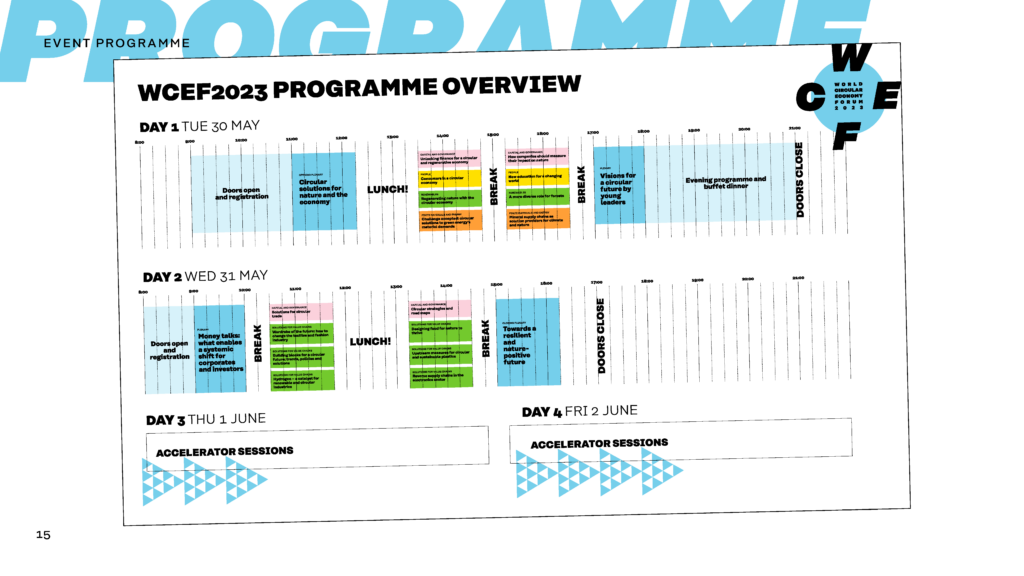
Key figures
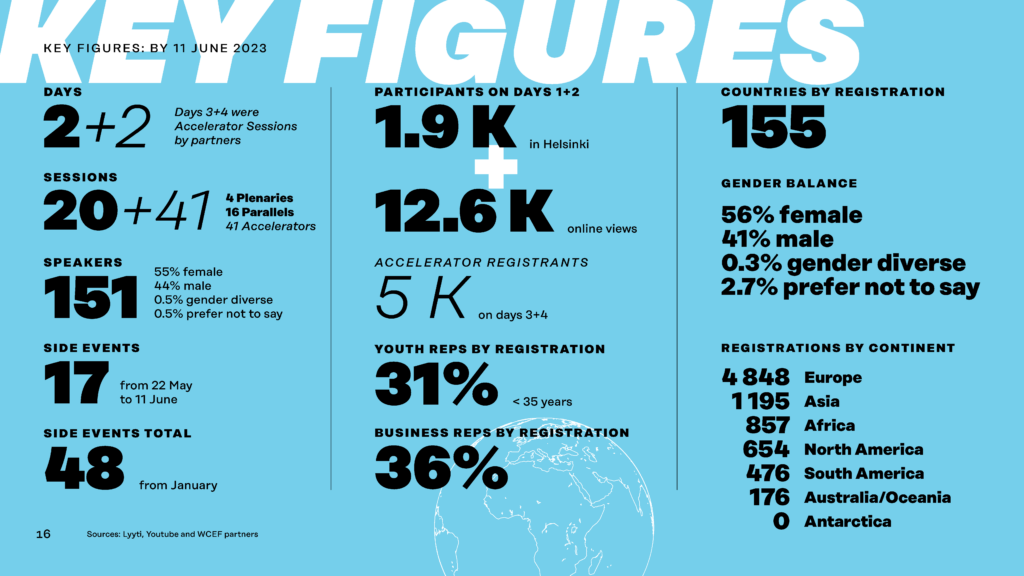
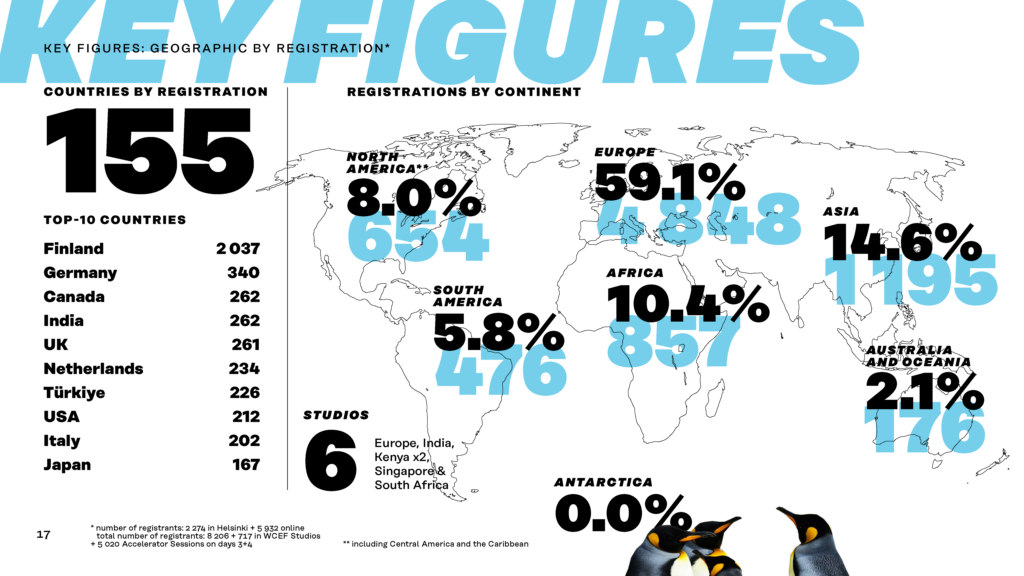
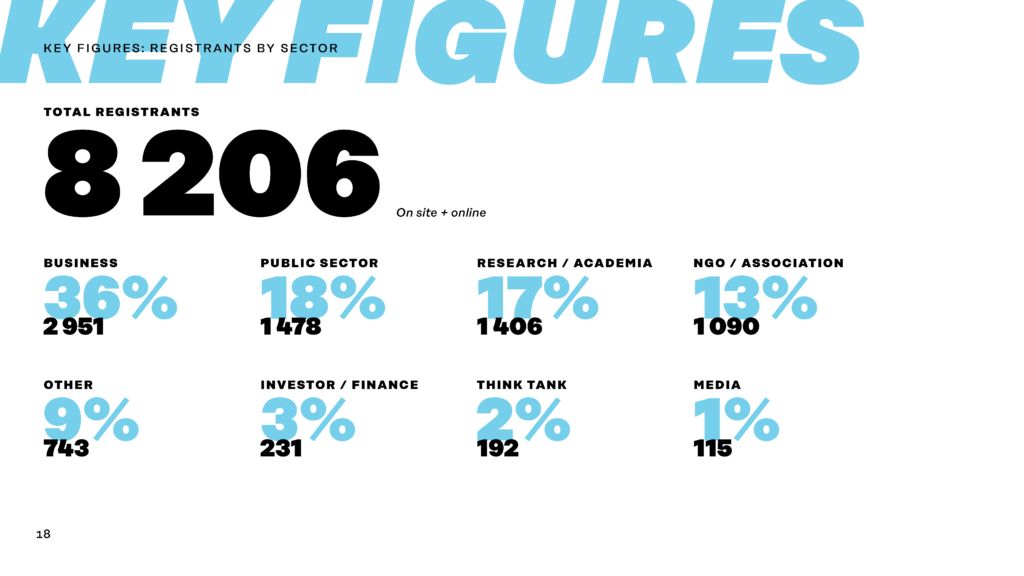
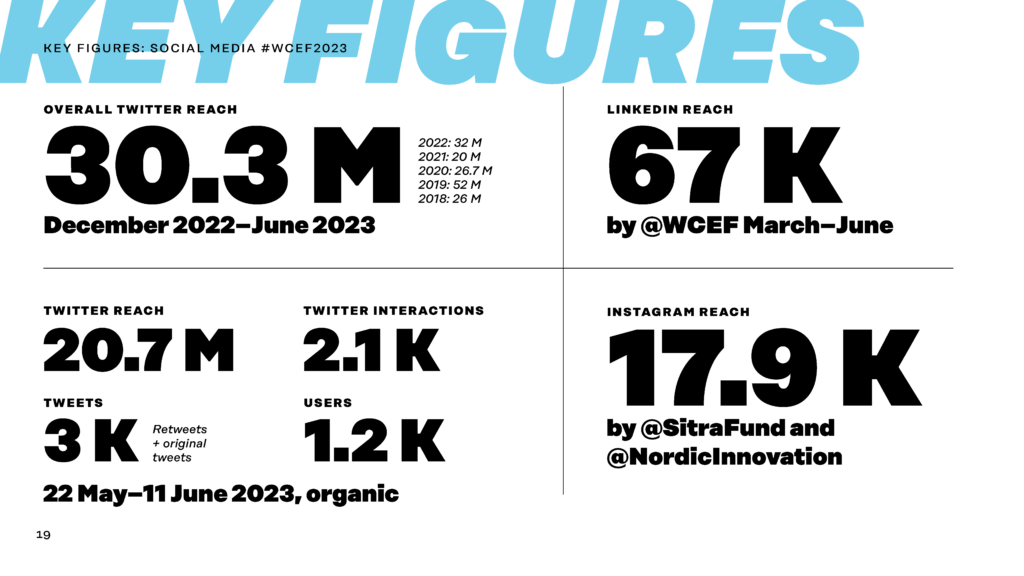
Organisers
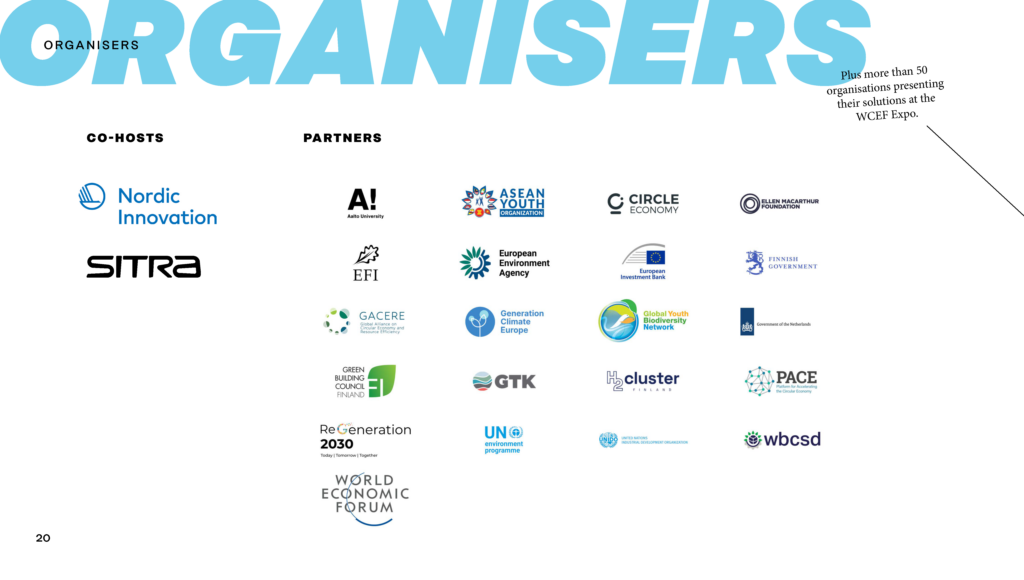
Timeline
